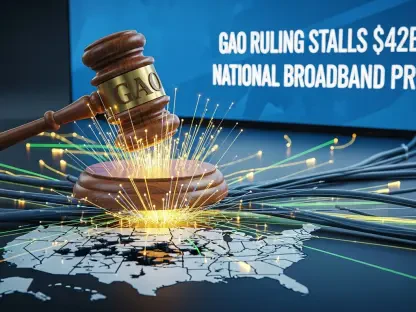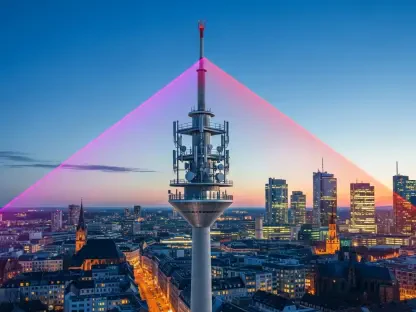In our discussion today, we have the privilege of speaking with Vladislav Zaimov, a telecommunications expert specializing in enterprise telecommunications and risk management of vulnerable networks. Given his extensive background, Vladislav provides an in-depth look into the complexities of mobile networks, particularly the strategic use of the 700 MHz spectrum to support both 4G and 5G infrastructures in Vietnam.
Can you explain the significance of the 700 MHz spectrum for 4G and 5G networks in Vietnam?
The 700 MHz spectrum is pivotal for mobile networks because of its ability to provide expansive coverage and penetrate buildings more effectively compared to higher frequency bands. In Vietnam, it’s especially important because it can enhance network performance in both urban and rural areas. Being a low-band spectrum, it is vital for ensuring widespread connectivity, which is crucial as the country transitions fully to advanced 4G and 5G services.
Why is Viettel excluded from the current re-auction of the 700 MHz blocks?
Viettel is excluded from this re-auction because they recently acquired the B2-B2′ band within the 700 MHz range during an auction in May 2025. This exclusion allows other carriers a fair chance to acquire the remaining parts of the spectrum.
What are the specific frequency bands being auctioned, and what is the starting bid for these bands?
The bands being re-auctioned are the B1-B1′ (703–713 MHz/758–768 MHz) and B3-B3′ (723–733 MHz/778–788 MHz). The starting bid for each of these frequency bands has been set at over VND 1.95 trillion, which is approximately $75 million.
What is the intended duration of the license for the winners of this auction?
Winners of this auction will be granted a license to use the spectrum for a duration of 15 years. This long-term licensing provides a stable foundation for the operators to plan and expand their network services efficiently.
How does the 700 MHz band enhance mobile network coverage, particularly in rural and underserved areas?
The 700 MHz band is known for its long-range propagation characteristics, which make it ideal for extending coverage into rural and underserved areas. Its ability to travel longer distances and penetrate buildings means that even regions with challenging terrain or limited infrastructure can achieve better connectivity.
What factors led to the failure of the initial auction attempt in December 2024?
The initial auction failed primarily due to insufficient interest from local carriers. Many operators were still evaluating their investment in the spectrum at that time or perhaps found the foundational cost too high relative to their anticipated return on investment.
How did the B2-B2′ re-auction in May 2025 succeed, and what role did Viettel play in it?
The B2-B2′ re-auction succeeded due to a more focused strategy by participating carriers, particularly Viettel, which showed a keen interest in securing the spectrum to enhance their competitive edge. Their decisive participation and the eventual success of the auction underscored their commitment to improving and expanding their network services.
What are Viettel’s plans for expanding their network using the newly acquired 700 MHz spectrum?
Viettel plans to leverage the newly acquired 700 MHz spectrum to significantly enhance their 4G and 5G coverage, with a pronounced focus on reaching underserved areas. They aim to install over 20,000 5G base stations in 2025 alone, as part of their broader goal to achieve 99% population coverage by 2030.
How does Viettel plan to achieve its goal of 99% population coverage by 2030?
Viettel’s strategy to achieve 99% population coverage involves an ambitious rollout of 5G infrastructure, including extensive deployment of base stations and optimizing both new and existing frequency bands. This comprehensive plan ensures that even remote areas receive high-quality mobile services.
What role does the 700 MHz spectrum play in supporting IoT applications like smart cities and precision agriculture?
The 700 MHz spectrum is integral to IoT applications due to its strong propagation capabilities. It can reliably connect a multitude of devices that power smart cities and precision agriculture, offering the necessary bandwidth and stability required for real-time data transmission and analysis.
Can you discuss the current state of Viettel’s 5G network, including subscriber numbers and coverage?
Viettel’s 5G network launched in late 2024 and has rapidly expanded, boasting 4 million subscribers by January. This accounts for 70% of 5G-enabled devices within their service areas, and they now cover all 63 localities in Vietnam, particularly key infrastructure like airports, industrial parks, and tourist sites.
How does Viettel’s 5G deployment strategy utilize Standalone (SA) and Non-Standalone (NSA) architectures?
Viettel employs both Standalone (SA) and Non-Standalone (NSA) architectures to offer flexible and robust 5G services. This allows them to maximize coverage and speed, deploying NSA in areas where existing 4G infrastructure can be leveraged, while using SA to build entirely new, cutting-edge networks.
What kind of facilities and infrastructure has Viettel established to support 5G development and deployment?
To support its 5G advancements, Viettel has established two specialized 5G laboratories in Hanoi and Ho Chi Minh City. These facilities play a crucial role in testing applications and tackling issues like signal interference, ensuring that innovative technologies are seamlessly integrated into the national network.
How does Viettel’s 5G network support business customers in various sectors with its 130 use case options?
Viettel’s 5G network provides diverse solutions across 130 use cases, which cater to industries such as industrial manufacturing, logistics, healthcare, and smart cities. They integrate advanced technologies like AI and IoT to enhance operational efficiencies, bolster connectivity and drive digital transformation across these sectors.
How do Viettel’s 5G service speeds and capabilities compare with other operators like VNPT and MobiFone?
Viettel’s 5G services offer impressive connection speeds of up to 1 Gbps with almost zero ping, placing it as a formidable player in the market. While VNPT and MobiFone have also launched 5G services, Viettel’s early adoption and widespread deployment strategy have given them a significant competitive advantage in terms of coverage and customer options.
What differences are there between Viettel’s and MobiFone’s 5G service architectures and frequency bands?
The primary difference lies in the frequency bands and deployment strategies. Viettel uses the 700 MHz spectrum with both SA and NSA architectures to ensure broader coverage, whereas MobiFone operates on the 3.8-3.9 GHz frequency band, emphasizing different technological strengths for their services.
What is your forecast for the future of telecommunications in Vietnam?
As Vietnam continues to invest in 4G and the exponential growth of 5G technologies, we can anticipate an era marked by comprehensive digital transformation. This will not only enhance consumer connectivity but also drive innovation across industries through IoT and AI technologies. The country is poised to become a leader in telecommunications in Southeast Asia, leveraging these advancements to improve societal infrastructure and economic development.









